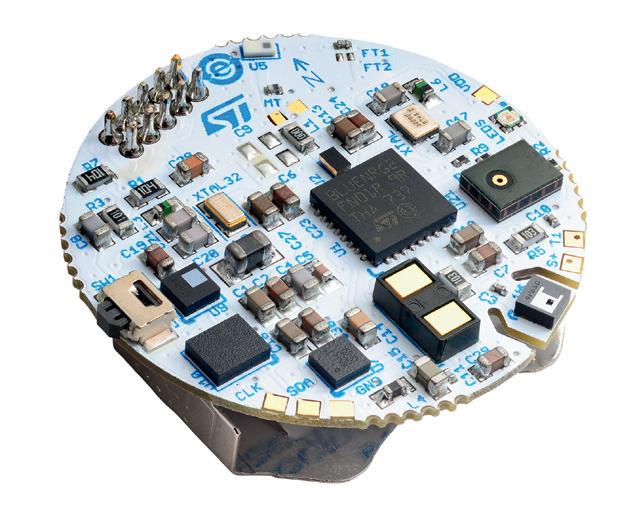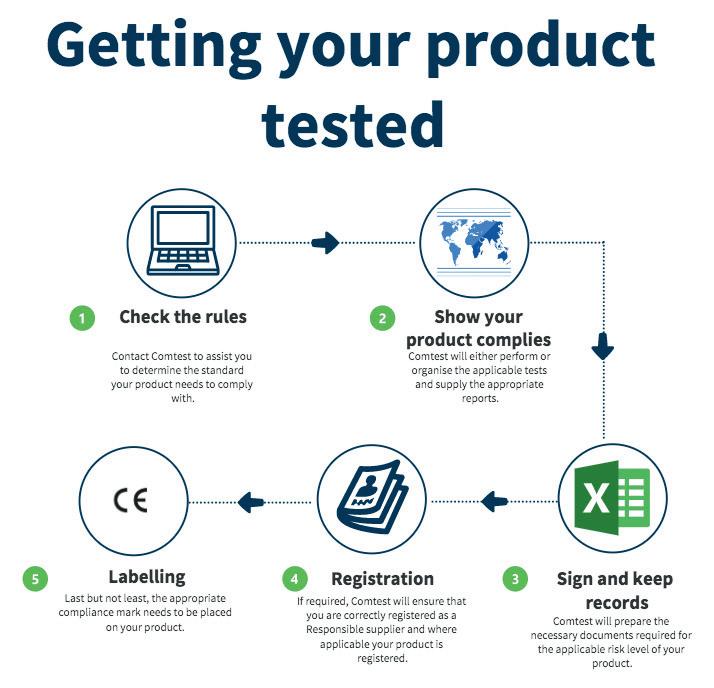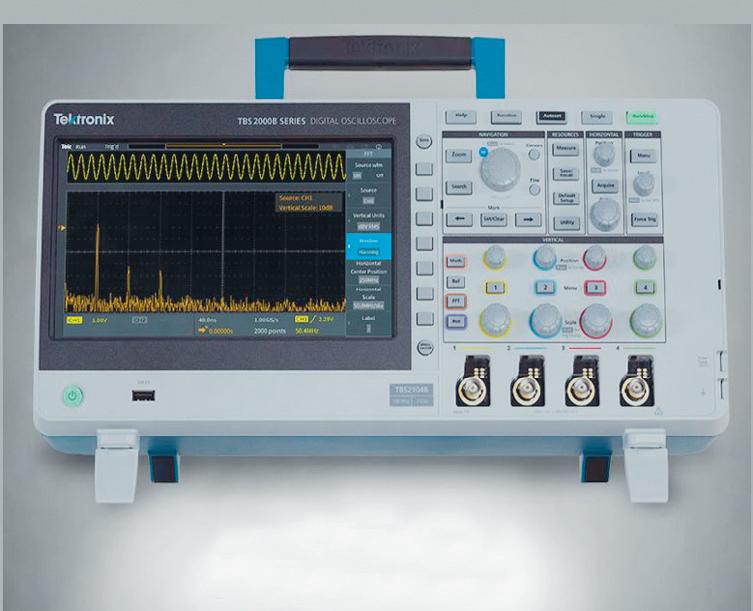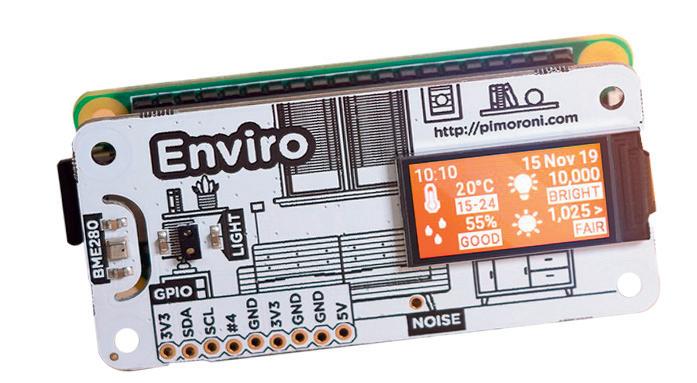
15 minute read
AI is only as smart as our influence
AI IS ONLY AS SMART AS OUR INFLUENCE Joseph Zulick*
If you incorrectly define data points or describe an outcome as being bad when it was good, then the decision tree that artificial intelligence uses starts to fall apart. It is unfair to claim that AI or sensor tracking failed because it didn’t meet our outcome, especially if we supplied the data and the parameters of success.
In a recent ‘Destiny of Manufacturing’ podcast, Danny Schaeffler, President of Engineering Quality Solutions, discussed that many companies are not ready for artificial intelligence because they are not done mastering the systems and data they have now. He felt that many companies have not reached the potential of their current systems.
Schaeffler went on to question, “Are we prepared to compete in the global market? Technology is pulling the planet closer together and we all have to examine our competitiveness.” Are you examining the total cost of ownership? We do not always take into account the price difference when we undertake a new job or task. Have we factored in transport costs — if international, duties and taxes and sometimes tariffs (yes, other countries charge tariffs)? Do we know the implementation costs? All of this information factors
The old term ‘garbage in equals garbage out’ is true even in the smartest of systems.
into our AI decisions and costs. Our current systems dictate the questions we will be asking for solutions; they are also the data points we will be using to provide those conclusions. In many plants they have stopped using their data collection systems such as tonnage monitors and die protection. This means they lack the historical trends that are used for the AI to draw a conclusion; data is critical to defining a trend and solution.
Is your company doing enough to meet the demands in the workplace? Schaeffler discussed an excellent point that as materials change and new products demand complex materials, it’s not just the manufacturing or production departments that need to be educated. The engineers need to research if the equipment is adequate for the new materials. Your AI is all but starting over if you can’t directly correlate the old material results and the new material expectations. The purchasing department needs to be looking at new material sources; it’s possible the supplier of simple mild steel is not going to be the best source for exotic materials. On the quoting side, if you’re pricing yourself too low, all departments will need to be trained on new technology and
©stock.adobe.com/au/sdecoret

materials. The sensors will need new calibration points as these changes occur. The resulting data will need to be compared with old data — and is it useful? Unfortunately, when you take on new materials simulation data may have a standard linear curve of data, but more likely it won’t.
Along with the data that needs to be gathered to produce accurate results, we must also temper our expectations. If we think that a first run part with new tools, cutters, nozzles, etc, along with new materials mixed with limited data, will produce accurate initial data, you are setting yourself up for disappointment.
Some of this is due to an extension of the curse of knowledge — once we know how something works, we can’t unknow this information. Consequently, we set too high of expectations and create unrealistic timelines. While AI and IoT can make life easier and more accurate, it cannot eliminate launch phase challenges until we can develop baseline data. Our influence over AI can be felt in the computer simulations and in closed-loop feedback where the confidence in the data can be misleading because the system has confidence in its calculation.
Let’s take an off-the-floor example. We have a programmable thermostat that turns the heat on when the temperature drops 2°. The data that I monitor is the front doorbell, which trips when the button is pressed. I may assume that the visitor is the cause for the drop in temperature. I have the data which correlates this to be true when in reality it’s the door opening and closing, whether there is a visitor or not. You can have a high degree of confidence because you show a correlation, but without adequate analysis of what the data means you may never reach the root cause. You may also have an inadequate number of sensors or be sensing the wrong thing to generate what is needed in order to model this situation.
The old saying is that everything that is measurable isn’t important and everything that is important isn’t measurable. This is often paraphrased and comes from Einstein’s quote of “Not everything that counts can be counted, and not everything that can be counted counts”. I’m sure this was after a grad student asked about their grades.
We are the greatest influencer in the accuracy of our results. I don’t want to venture into intentionally manipulating data for personal gains, but at a very minimum it has been viewed by systems like Linknet and other data collection systems that the formulas are often edited to produce OEE (overall equipment effectiveness) scores of around 80% when in reality they are more like 60%.
If you obey the true rules of systems OEE, machine availability of 100% starts with a base of 365/24/7. If you choose not to run a third shift, many companies will say they’re 85% efficient running two shifts when in reality this would be more like a maximum of 66%.
This is where data gets tricky, and AI is only as good as that we choose to provide. Many people will say efficiency is a rating of how well you do your process, so two shifts offer a maximum of 100%. The difficulty is that you may never go to fill that pipeline for the third shift if you believe you’re maxed out at 90% OEE.
This is just one example of how data can get muddy if you allow it to become that way.
The other problem we have in AI is that when it comes to data, too often we start with the conclusion and work towards proving our point. This becomes a big problem when you are trying to sell the concept of big data to workers and operators and you have a history of using the data not to bring about improvement, but instead to assign blame.
AI can provide predictive analysis based on current data and trend examination. These trends can provide us with that look over the horizon, clear of the forest and the trees. When two roads diverge in the woods, now you can find the path that takes you to the promised land and the one that leads you off the cliff.
If you provide the right balance so people can achieve the ultimate goal of improvement and innovation, you have to set your goal for AI to provide these solutions. It’s more difficult than ever to compete in this global economy, and in order to do so we need advancement and breakthroughs that will come from looking at our problems in a new way and allowing AI to provide the path.
*Joseph Zulick is a writer and manager at MRO Electric and Supply, offering Siemens and FANUC factory automation parts used by engineers worldwide.
WI-FI 6 FRONT-END MODULE Qorvo’s QPF4800 Wi-Fi 6 front-end module (FEM) is designed for Wi-Fi 6 (802.11ax) applications, combining the high performance levels required to transfer HD and 4K video with the efficiency necessary for Internet of Things (IoT) applications. The highly integrated FEM is suitable for a range of Wi-Fi 6 applications, including wireless routers, customer premises equipment, access points, set-top boxes and residential gateways.
The dual-band FEM features 2.4 and 5 GHz power amplifiers; two single-pole, double-throw (SPDT) switches; a regulator; a diplexer; and a low-noise amplifier with bypass. It is designed to support increased users per access point, increased per-user traffic demand, higher-density deployments, increased cellular offloading, and additional power and performance in Wi-Fi 6 applications.
The high-performance FEM provides a transmit gain of over 29 dB and a receive gain of 14 dB, with a 2.6 dB noise figure when operating over a 5 V supply. Additionally, it provides the required density, capacity and thermal performance for 4x4 MIMO operation. Mouser Electronics au.mouser.com

SOCIAL DISTANCING REFERENCE DESIGN STMicroelectronics has announced a compact reference design that is suitable for monitoring social distancing, assuring remote operation and provisioning, as well as warning, anti-tampering and potentially providing contact tracing to protect human health in all environments, including in response to global or local pandemic conditions.
Leveraging Bluetooth Low Energy technology through its incorporation of ST’s ultralowpower BlueNRG-2 system-on-chip with tunable RF output power, the BlueNRG-Tile reference design measures the signal strength of nearby Bluetooth non-connecting beacons and, in real time, calculates proximity to these sources. The circuit can be provisioned and then operate, issuing warnings when another beacon intrudes on an adjustable perimeter or when tampered with — even when not connected to a smartphone or 5G network.
The base reference design can be supplemented with ST’s S2-LP sub-GHz ultralowpower RF transceiver to add bidirectional tag-to-cloud communication through the Sigfox 0G Global Network, allowing private and anonymous tag provisioning, notifications and an advisory return-channel for emergency warnings. To assure power economy and extend battery lifetime, the ultralow power components are further enhanced with a MEMS accelerometer that power cycles the unit when it isn’t moving. Optionally, internal or external memory could provide long-term storage of nearby beacons, allowing contact tracing.
The reference design has value in any environment where people need to work safely. It can be used as is or enhanced for a wide range of applications, including as bracelets and bands or as plug-ins or add-ons to eyeglasses, helmets, and masks and shields. STMicroelectronics Pty Ltd www.st.com


IP68 SURFACE MOUNTING ENCLOSURES The 1555F range from Hammond Electronics is a family of rugged IP68 sealed enclosures designed for surface mounting PCB-based or DIN rail-based equipment such as security components, control equipment and radio repeaters for installation in harsh industrial environments or outdoor applications. Available in RAL 7035 light grey, and moulded in either general-purpose UL94 HB ABS for internal use or flameproof UL94 5 VA @ 3 mm polycarbonate for exterior installation, the units have a number of innovative features that provide good functionality.
In use, the lid is secured to the wall or other surface using the slots moulded into the integral flanges. The screws securing the lid to the base are then inaccessible as they are against the surface, giving security against unauthorised tampering. For maximum security, the units can be attached to the wall with tamper-resistant screws. Standoffs are moulded into both the lid and the base and, apart from in the two smallest sizes, DIN rail mounting tabs are also provided. The bottom of the base features a moulded recess for a membrane keyboard or label.
The 15 sizes range from 65 x 65 x 42 mm to 180 x 119 x 62 mm; all lids are fitted with captive M4 stainless steel fixings, allowing repetitive assembly and disassembly. Environmental sealing is achieved through a tongue and groove design and a moulded silicon rubber gasket; all fixings are outside the gasket seal. Units can be supplied factory modified with machining and silk screening to the user’s specification. Hammond Electronics Pty Ltd www.hammondmfg.com
COMTEST LABORATORIES PTY LTD AND TÜV SÜD: A NEW PARTNERSHIP

Recently Comtest Laboratories Pty Ltd, based in South Melbourne, Australia, and TÜV SÜD China signed an agreement strengthening cooperation within the fields of testing, inspection & products certification. The TÜV SÜD & Comtest Laboratories collaboration streamlines these processes.
German giant TÜV SÜD, with its collection of more than 1000 laboratories worldwide, offers Australian, New Zealand and international clients a seamless customer experience, no matter which country or region the products are intended for.
Expanding your product sales overseas can be time-consuming and legally confusing. In each region of the world, compliance standards constantly change, certification can be a lengthy and costly process unless you know the correct path to follow.
For South Melbourne firm Comtest Laboratories, the partnership means any client can have their product tested or assessed to Australian standards or be tested by one of TÜV SÜD’s laboratories for almost any standard in the world.
Services that can be accessed include, but are not limited to: testing, inspection, auditing and certification for electrical and electronics, telecommunications, hardline and soft-line products.
Comtest Laboratories is an accredited NATA laboratory. The National Association of Testing Authorities (NATA) provides accreditations to laboratories that meet high standards of testing, which allow greater confidence that products have been tested accurately.


DIGITAL STORAGE OSCILLOSCOPE Tektronix has released the entry-level TBS2000B digital storage oscilloscope, offering high performance and advanced debugging. Electronics designers, test engineers and educators should benefit from its easy-to-use controls, automated measurements and large display.
The TBS2000B is a complete drop-in replacement for TBS2000 series oscilloscopes, with the same form factor and programmable interface but now including cutting-edge technology, including intuitive control via the 9″ display and automated measurements to increase productivity and speed up design and test processes. It is suitable for a range of applications, including IoT, automotive, defence, power and education.
The WVGA display features a 5-million-point record length and 2 GS/s sample rate. This should enable users to capture and display more of a signal, speeding up debug and design validation. The device also features 32 automated measurements and on-waveform cursor readouts with search and mark features that enable easy identification of events that occur in the acquired waveform.
TekVPI, Tektronix’s probe support interface, enables wide application coverage using the latest active differential and current probes with automatic scaling and units. The product also supports traditional passive BNC probes and has a range of connectivity options, including Wi-Fi support (via USB Wi-Fi dongle), two USB host ports and 100-BaseT Ethernet for easy sharing of measurements and collaboration. element14 au.element14.com

SENSOR SOLUTION FOR INDOOR MONITORING Pimoroni’s PIM486 Enviro for the Raspberry Pi board provides a comprehensive sensor solution for indoor monitoring, offering measurement of pressure, temperature, humidity, noise level and light. The fully assembled board enables engineers to push collected data to an external server, allowing remote access from any location.
The product incorporates a Bosch BME280 humidity and pressure sensor. Designed for mobile applications prioritising low power consumption and small form factor, the BME280 sensor offers a high-linearity tool for measuring humidity, pressure and temperature. The sensor features rapid response times, supporting performance requirements for context awareness applications.
The product also includes a Lite-On LTR-559ALS-01 optical sensor — an integrated I²C digital light and proximity sensor with a built-in emitter — as well as a Knowles SPH0645LM4H-B MEMS microphone. Shipping with a Python library, the compact 65 x 30 x 8.5 mm module is suitable for use with the Raspberry Pi Zero and compatible with all 40-pin Raspberry Pi models. Mouser Electronics au.mouser.com
FANLESS DIGITAL SIGNAGE SYSTEM iEi’s IDS-310-AL series is a fanless embedded system featuring an Intel Celeron N3350E or J3455E SoC. It is preinstalled with 4 GB of DDR3L SO-DIMM and can accommodate up to 8 GB of DDR3L memory. Storage in the system is supported by the full-size PCIe Mini card slot for mSATA module or the SATA 6 Gbps connector for SATA DOM.
The ultracompact digital signage system includes three HDMI outputs supporting up to 3840 x 2160 resolution. Other slots and connectors include one RS-232/422/485, two GbE ports, three USB 3.2 Gen 1 (5 Gbps) ports, audio (line-out and mic-in) and one M.2 A-key 2230 slot for an optional Wi-Fi module. ICP Electronics Australia Pty Ltd www.icp-australia.com.au

TIME-OF-FLIGHT SENSOR STMicroelectronics has extended the capabilities of its FlightSense time-of-flight (ToF) ranging sensors by introducing the VL53L3CX with patented histogram algorithms that allow measuring distances to multiple objects.
The VL53L3CX measures object ranges from 2.5 cm to 3 m, unaffected by the target colour or reflectance — unlike conventional infrared sensors. This allows designers to introduce powerful features to their products, such as enabling occupancy detectors to provide error-free sensing by ignoring unwanted background or foreground objects, or reporting the exact distances to multiple targets within the sensor’s field of view.
The ST patented histogram algorithms increase cover-glass crosstalk immunity and allow real-time smudge compensation preventing external contamination from adversely affecting the ranging accuracy of, for example, vacuum cleaners or equipment that may be used in a dusty industrial environment. Ranging under ambient lighting is also improved.
In addition, the VL53L3CX has good linearity that increases short-distance measurement accuracy enhancing wall tracking, faster cliff detection and obstacle avoidance in equipment such as service robots and vacuum cleaners. It features a compact, all-in-one package design that eases integration in customer devices, as well as low power consumption that helps extend battery runtime.
ToF sensing brings high performance to a wide variety of applications, including occupancy detection in building-automation and lighting controllers, proximity sensing in IoT endpoints, auto-wakeup in portable devices and user detection in automatic sanitary equipment. With their fast response times, ToF sensors also enhance the performance of devices requiring precise movement control, typically robotics and indoor drones. STMicroelectronics Pty Ltd www.st.com

LPKF ProtoLaser ST Desktop Laser System for Structuring of PCBs

The LPKF ProtoLaser ST desktop laser system enables efficient prototyping of complex digital and analog circuits, RF and microwave circuit boards. The system achieves exact geometries on almost any material and is ideal for structuring single or double sided circuit boards.
Call us today: +61 2 9687 1880
Embedded Logic Solutions Pty Ltd sales@emlogic.com.au
ABN 44 109 776 098

